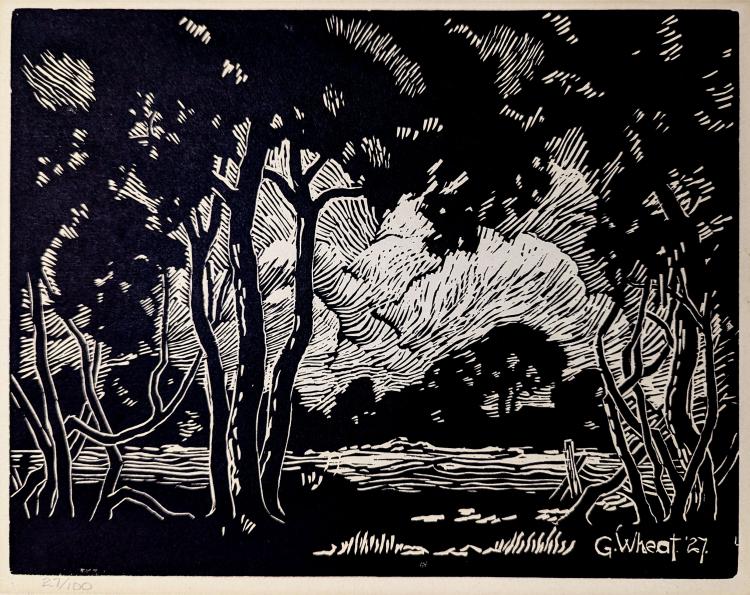Join Museum Associates
Membership
Founded in 1976, Museum Associates is the friends group that supports the Museum of Art and Archaeology’s exhibitions, acquisitions, and programming. Museum Associates also help to manage the Museum Store. Donations to Museum Associates are tax deductible.
Pictured: Quatrefoil fibula, Villanovan, Late 8th century BCE, Bronze
Gift of Museum Associates (2000.16)

Give of Your Time
Volunteer
Volunteers help give tours as trained docents, welcome visitors as gallery guides, staff our Museum Store, and assist at special events. Please contact us [artmuseum@missouri.edu] to learn more about volunteering your time at the Museum of Art and Archaeology.
Pictured: Gladys Wheat (1889 – 1976), Untitled, 1927, Woodblock print on paper
Gift of Charles and Jan Swaney (2021.5.6)

Donate to the Museum
Giving works of art
We welcome gifts of works of art to grow our permanent collection in meaningful ways. All prospective gifts are carefully considered through set acquisitions procedures. For more information, see our Collections Management Policy and our Code of Ethics. Contact our registrar if you have specific questions.
Appraisals
Professional standards and our code of ethics prevent staff from authenticating or valuing artwork. Consider hiring a professional appraiser.
- American Society of Appraisers, appraisers.org
- Appraisers Association of America, appraisersassoc.org
- Art Dealers Association of America, artdealers.org
- International Society of Appraisers, isa-appraisers.org
Pictured: Byron L. Smith (1960-2024), Cedar Creek at Devil's Backbone, 1995, Watercolor on paper
Gift of Charles and Jan Swaney (2021.5.7)
